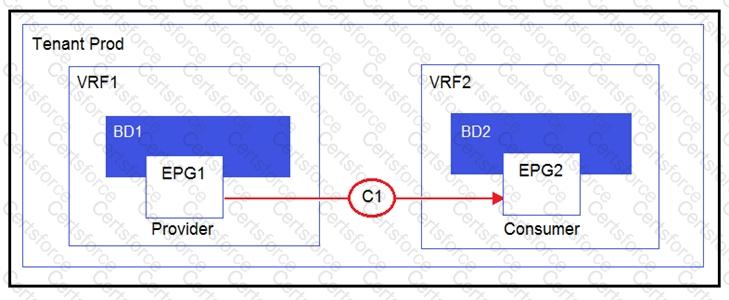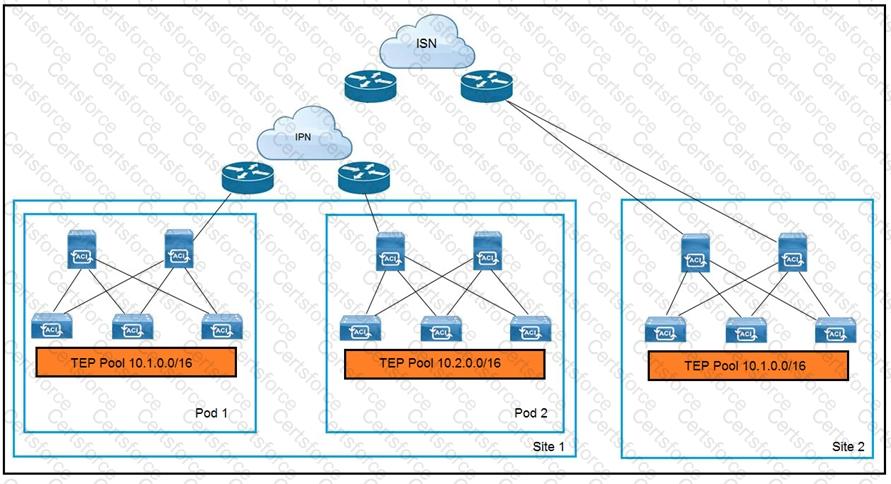Refer to the exhibit.

Which configuration set must be applied to filter 1 to enable SSH communication between Web_EPG to App_EPG?
Refer to the exhibit.

Which two configurations enable inter-VRF communication? (Choose two.)
An engineer is configuring ACI Multi-Pod between two data centers and must plan the physical cabling in the primary data center. How must the Cisco ACI Multi-Pod topology be connected?
A cloud provider must make a pair of firewalls available to all tenants. Each tenant defines its own service graph. Where should the Layer 4 to Layer 7 service be configured to accomplish this goal?
Which protocol must be applied between the inter-pod network and spines within each pod to allow broadcast traffic replication between Cisco ACI pods?
How is broadcast forwarded in Cisco ACI Multi-Pod after ARP flooding is enabled?
What is the advantage of implementing an active-active firewall cluster that is stretched across separate pods when anycast services are configured?
Refer to the exhibit.

An engineer extends a Cisco ACI Multi-Pod setup to a Cisco ACI Multi-Site implementation. Which action allows the interconnection?
Refer to the exhibit.

Server S1 is load balancing traffic received from SIP1 to BC1 and BC2. The Cisco ACI fabric must learn the IP address of S1 and unlearn the BC1 and BC2 IP addresses. Which two actions must be taken to meet these requirements? (Choose two.)
What are two characteristics of Cisco ACI interaction with MSTP? (Choose two.)